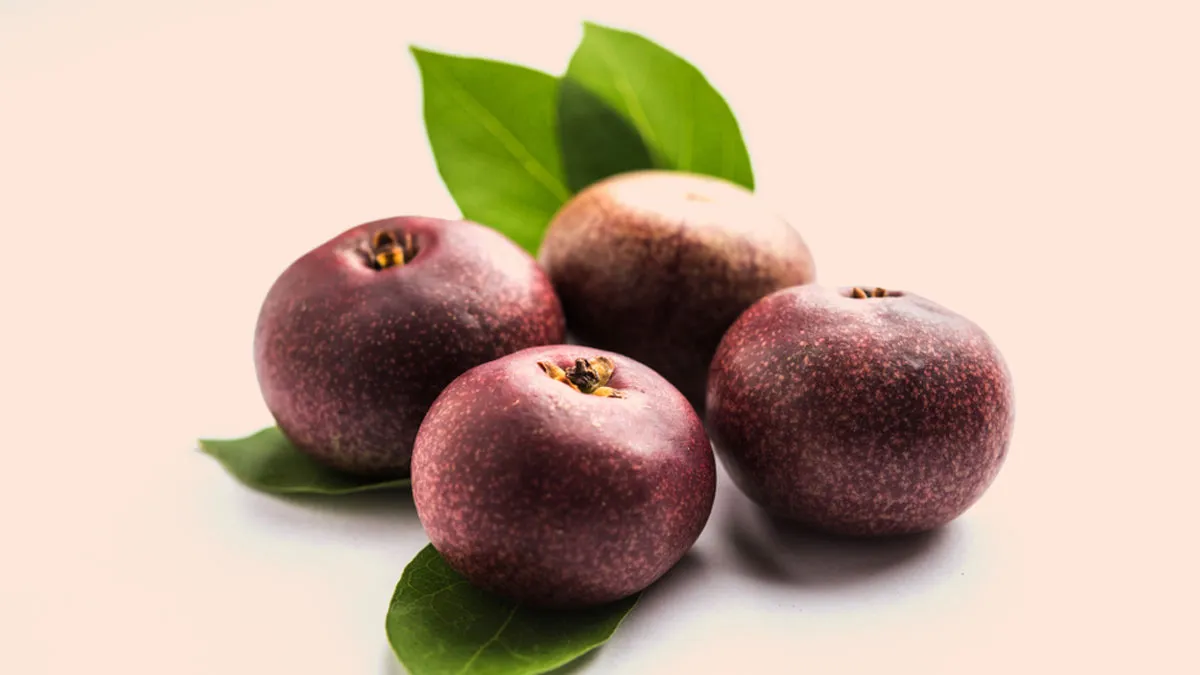
Kokum, a fruit-bearing plant scientifically known as Garcinia indica, holds a special place in Maharashtrian cuisine. This small, deep purple fruit is cherished for its tangy flavour and unique properties, which make it a staple ingredient in a variety of dishes. From cooling sherbets to flavourful curries, kokum adds a distinct touch to the culinary palette of the region. However, beyond its gastronomic appeal, kokum offers several health benefits.
Table of Content:-
Culinary Uses of Kokum

In Maharashtra, kokum is primarily used as a souring agent, much like tamarind. It enhances the taste of dishes such as sol kadhi, a refreshing drink made from kokum and coconut milk, and traditional curries like amti. Its tangy flavour not only balances the taste of spicy dishes but also acts as a natural coolant, especially during the sweltering summer months.
Dried kokum rinds, often referred to as kokum petals, are commonly used in cooking. They are soaked in water to extract their tangy essence, which is then added to food or beverages. Kokum sherbet, a popular drink, is known for its soothing properties and ability to keep the body hydrated.
Kokum is rich in vital nutrients, including antioxidants, hydroxycitric acid (HCA), vitamins, and minerals. It is particularly valued for its anti-inflammatory, digestive, and anti-obesity properties.
Health Benefits of Kokum

1. Aids Digestion
Kokum is widely recognised for its digestive benefits. It has been used in traditional medicine to combat acidity, bloating, and indigestion. A study published in the Journal of Medicinal Plants Research found that kokum extract enhances digestive enzyme activity, promoting better digestion and reducing gastrointestinal discomfort.
2. Rich in Antioxidants
The fruit is a powerhouse of antioxidants that help fight free radicals in the body, reducing oxidative stress and protecting against chronic diseases. A study kokum’s high levels of anthocyanins, which have strong antioxidant and anti-inflammatory effects. These compounds also contribute to kokum's vibrant purple colour.
3. Supports Weight Loss

Hydroxycitric acid (HCA), a compound found in kokum, is known for its role in weight management. As per studies, HCA has been shown to suppress appetite and inhibit the enzyme citrate lyase, which the body uses to store fat.
4. Natural Coolant
Kokum is traditionally consumed in summer to prevent heat strokes and dehydration. Its cooling properties help regulate body temperature and maintain hydration.
5. Anti-Inflammatory Properties
Thanks to its rich antioxidant content, kokum helps reduce inflammation in the body. This can be beneficial for managing conditions such as arthritis and other inflammatory disorders.
Also read: Who Can Benefit From An Anti-Inflammatory Diet? Foods To Eat And Avoid
Incorporating Kokum into Your Diet

Kokum is versatile and can be used in several ways:
- Sol Kadhi: A light, refreshing drink made with kokum and coconut milk.
- Sherbet: A sweet and tangy beverage ideal for hydration.
- Soups and Curries: Adds a tangy depth of flavour to broths and lentil dishes.
Conclusion
Kokum is not just a culinary delight but also a nutritional powerhouse with significant health benefits. From aiding digestion to supporting weight management, its versatility extends beyond the kitchen. Incorporating kokum into your diet is an excellent way to embrace the rich traditions of Maharashtrian cuisine while reaping its health rewards.
With its tangy taste and therapeutic properties supported by scientific research, kokum truly embodies the perfect blend of flavour and function.
Also watch this video
How we keep this article up to date:
We work with experts and keep a close eye on the latest in health and wellness. Whenever there is a new research or helpful information, we update our articles with accurate and useful advice.
Current Version